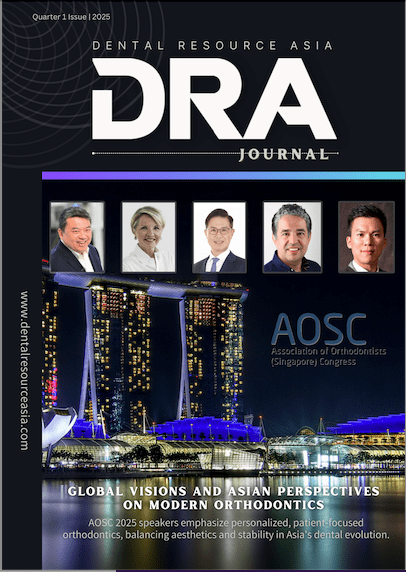Key Takeaways:
- Researchers find dental caries may causally increase the risk of osteoporosis and postmenopausal osteoporosis with pathological fractures.
- The study used Mendelian randomization to explore causal relationships between oral diseases and bone health.
- Findings suggest proactive osteoporosis screening for patients with severe dental caries could be beneficial.
- Data highlights the potential existence of a “teeth-bone axis” connecting oral and skeletal health.
A New Perspective on Oral and Bone Health
A recent study published on PMC has uncovered a significant link between dental caries and an increased risk of osteoporosis, particularly in postmenopausal women. Conducted by researchers from the Department of Orthopedics at the Chinese PLA General Hospital in Beijing, this investigation utilized advanced genetic analysis techniques to explore the connection between oral diseases and systemic bone health. By employing Mendelian randomization (MR), the authors aimed to address limitations inherent in traditional observational studies, which are often prone to confounding factors.
According to the study, dental caries, measured using the DMFS index (the sum of Decayed, Missing, and Filled tooth Surfaces), demonstrated a positive causal effect on osteoporosis and related fractures. This finding adds new depth to the understanding of how oral health conditions may influence broader systemic health outcomes.
Leveraging Genetics to Explore Causality
The research team conducted their analysis using data from large-scale genome-wide association studies (GWAS). These datasets included participants of European ancestry, providing robust insights into the genetic underpinnings of both oral diseases and bone health. Specifically, the study utilized single-nucleotide polymorphisms (SNPs) as instrumental variables to assess the causal relationships between periodontitis, dental caries, and various bone-related outcomes such as osteoporosis, bone mineral density (BMD), and fracture risk.
The authors explain that MR relies on the principle of independent assortment of alleles during meiosis, creating a natural randomization process akin to randomized controlled trials (RCTs). This method helps mitigate biases commonly found in observational studies. As stated in the article, “Mendelian randomization (MR) analysis can elucidate causal associations between exposure and outcome by using genetic variants as instrumental variables (IVs), thus accounting for observational bias.”
Researchers selected SNPs associated with periodontitis and dental caries based on stringent criteria, ensuring their suitability as instrumental variables. They also excluded SNPs correlated with potential confounders like smoking, alcohol intake, and vitamin D insufficiency.
Findings: Dental Caries and Its Impact on Bone Health
The study’s multivariable Mendelian randomization (MVMR) analysis revealed a notable relationship between dental caries and osteoporosis. After adjusting for periodontitis, dental caries showed a positive causal effect on osteoporosis (OR = 1.165, [95% CI 1.020 to 1.331, P = 0.025]) and postmenopausal osteoporosis with pathological fractures (OR = 1.422, [95% CI 1.027 to 1.969, P = 0.034]).
However, these causal relationships were not observed in the single-variable Mendelian randomization (SVMR) analysis, highlighting the importance of considering multiple variables simultaneously. The authors noted that “the causal associations were robust in various sensitivity analyses,” underscoring the reliability of their findings.
Interestingly, the study did not identify a similar causal effect for periodontitis when adjusted for dental caries, suggesting that dental caries may play a unique role in influencing bone health.
Screening for Osteoporosis in Dental Patients
The findings have practical implications for clinical practice. Given the established link between dental caries and osteoporosis, the authors suggest that proactive osteoporosis screening in patients with severe dental caries may be warranted. This recommendation aligns with growing evidence of a “teeth-bone axis,” where oral health conditions could serve as indicators of systemic skeletal health.
As the study concludes, “dental caries causally increases the risk of OP and postmenopausal OP with pathological fracture, suggesting the existence of teeth-bone axis.” This observation underscores the interconnectedness of oral and systemic health and emphasizes the need for a holistic approach to patient care.
Oral Diseases and Systemic Health
Oral diseases, including dental caries and periodontitis, are among the most prevalent health issues globally, affecting approximately 3.5 billion people. Beyond their immediate impact on oral health, these conditions have been linked to systemic diseases such as cardiovascular disorders, rheumatoid arthritis, and dementia. The current study builds on this body of evidence by exploring how oral diseases might influence bone health through shared biological mechanisms and risk factors.
For instance, the oral microbiome, considered the gastrointestinal tract’s primary microbial reservoir, exhibits regulatory potential that may aggravate bone loss. Similarly, chronic inflammation associated with periodontitis has been shown to contribute to bone loss in various parts of the body. These pathways highlight the complex interplay between oral and systemic health.
A Call for Further Research
While the study provides compelling evidence of a causal relationship between dental caries and osteoporosis, the authors emphasize the need for further research to validate these findings and explore underlying mechanisms. Future investigations could benefit from incorporating diverse populations and longitudinal data to strengthen the generalizability of the results.
In the meantime, the study offers valuable insights for healthcare providers, encouraging them to consider oral health as a potential window into systemic conditions. By integrating dental evaluations into routine health assessments, clinicians may better identify individuals at risk of osteoporosis and fractures, ultimately improving patient outcomes.
For more details, readers are encouraged to consult the original article on PMC.
The information and viewpoints presented in the above news piece or article do not necessarily reflect the official stance or policy of Dental Resource Asia or the DRA Journal. While we strive to ensure the accuracy of our content, Dental Resource Asia (DRA) or DRA Journal cannot guarantee the constant correctness, comprehensiveness, or timeliness of all the information contained within this website or journal.
Please be aware that all product details, product specifications, and data on this website or journal may be modified without prior notice in order to enhance reliability, functionality, design, or for other reasons.
The content contributed by our bloggers or authors represents their personal opinions and is not intended to defame or discredit any religion, ethnic group, club, organisation, company, individual, or any entity or individual.

